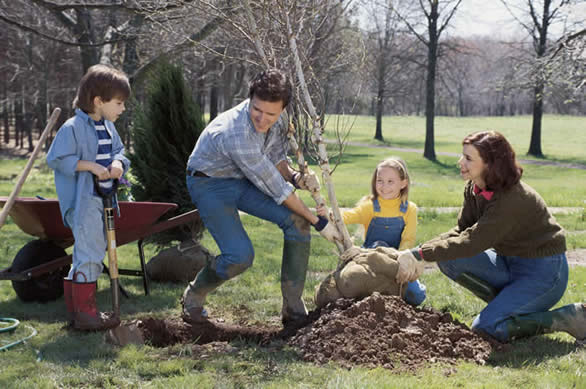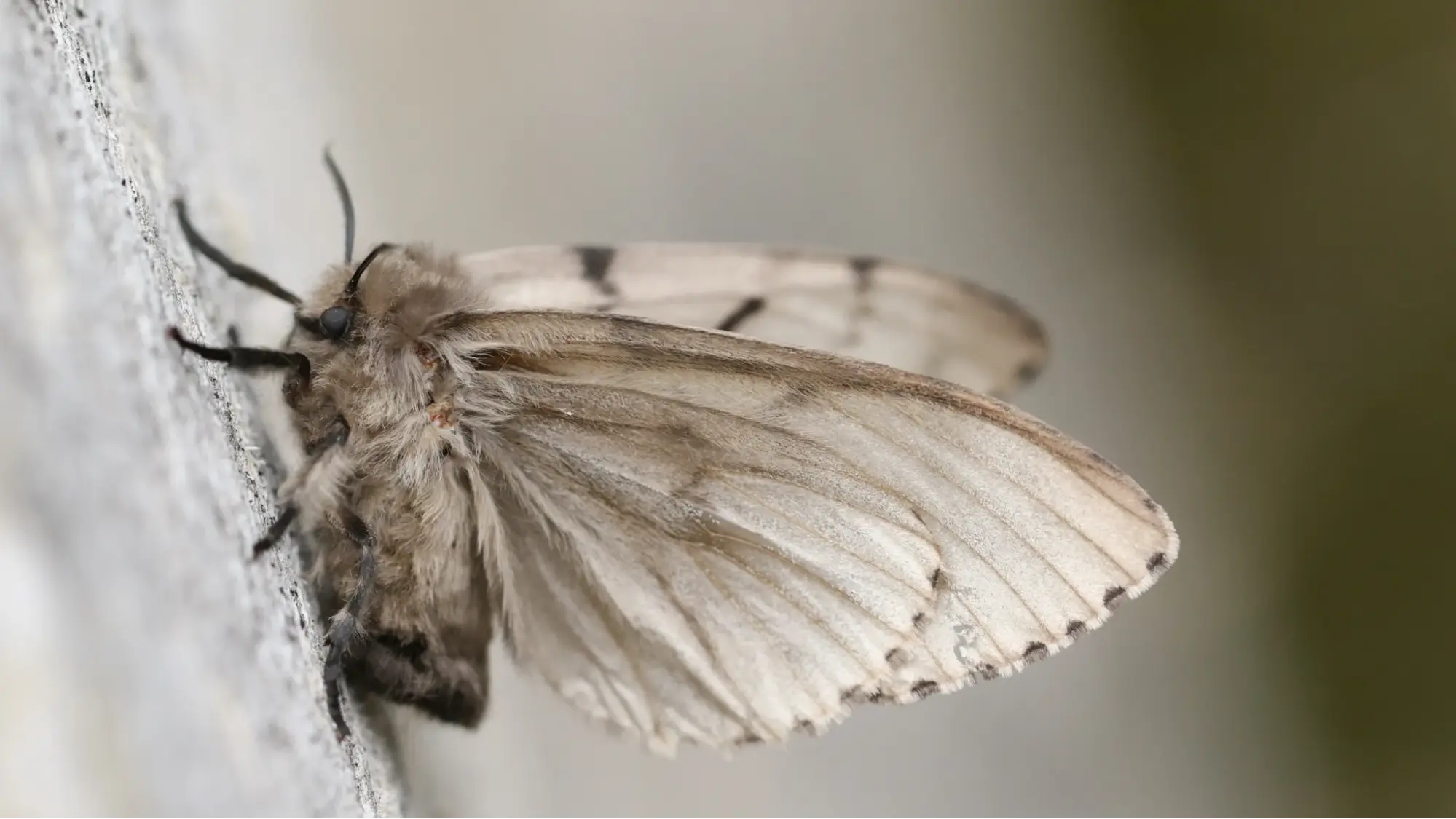Did you know that strong winds can uproot young trees in just a few minutes, causing long-term damage to your garden or landscape? While ice, snow, and frost are often top concerns in winter, property owners also need to focus on keeping trees safe, healthy, and beautiful during spring, summer, and fall. Strong winds pose a serious threat to young trees, especially during their first few years of growth, when roots are not yet fully established. Understanding how to protect young trees from wind is essential to prevent broken branches, leaning trunks, or even complete tree loss.
Although we can’t control the weather, there are effective methods for wind protection for trees that minimize damage and help them thrive. From staking and protective barriers to careful site selection, taking proactive steps ensures your trees remain healthy and resilient. In this guide, we’ll share practical tips on how to protect young trees from wind and keep your landscape thriving throughout the year.
Plant a Tree in the Right Place
It all begins with tree planting. First of all, you need to choose where to plant your new trees on your property. You should aim to find places which are naturally protected from winds. When planting trees you also need to take into consideration the direction from which the wind is usually blowing in your garden. Do you find that wind is often blowing from east to west? If so, it would be better for you to plant a tree somewhere in the western part behind your house. In this case, a house is most likely to protect a young tree from high winds. Later, when a tree gets stronger you’ll be able to move it to another location.

After selecting the ideal planting location, it’s important to provide additional support for young trees. One effective method of tree wind protection is staking, which stabilizes the trunk and helps the roots establish firmly in the soil. You can use stakes and soft ties to gently secure the tree without damaging the bark, ensuring it can sway slightly but won’t topple in strong gusts. Learning how to support trees from wind properly not only prevents leaning or snapping but also encourages stronger trunk and root development, giving your trees a better chance to thrive even in exposed areas.
How to Protect Newly Planted Trees From Wind?
Using a cover delivers multiple benefits to young trees. A cover is used to protect trees from strong winds, tree pests and hungry animals. A cover needs to be placed over the top of a tree. When using cover to protect young trees from winds you need to make sure that a tree will get enough sunlight. It’s crucial for you to watch weather forecast carefully on a regular basis. It makes sense to remove cover from young trees if no winds, storms and other types of severe weather are expected in the nearest future.
In addition to providing protection from wind and pests, using a cover can also help maintain moisture and reduce transplant shock for newly planted trees. Properly installing a cover is an essential part of new tree protection and can be combined with staking for maximum stability. Understanding how to support young trees from wind while using a cover ensures that the tree grows straight and strong, without restricting air circulation or sunlight. Regularly checking the cover and adjusting it based on weather conditions is key to keeping your young trees healthy and thriving.
| Type of Cover | Purpose | Tips for Use |
|---|---|---|
| Tree Wraps / Fabric Covers | Protects from wind, frost, and pests | Ensure breathable material; remove when no severe weather is expected |
| Mesh Guards | Shields against animals | Place around trunk; secure but allow growth; remove during hot periods |
| Temporary Plastic or Burlap Covers | Wind and storm protection | Only use during predicted high winds; ensure sunlight reaches the leaves |
Keep Young Trees Watered Regularly
There has been a lot of talk about the importance of watering trees. Dehydration negatively affects the health of trees. The lack of water can result in weak branches, broken branches, yellow leaves and many other negative consequences. Watering is something that promotes healthy growth of trees.
Proper hydration is particularly important for newly planted trees. Properly hydrated trees grow strong. As a result, the risk of tree damage during strong winds and severe storms reduces dramatically. That’s why you need to ensure that a young tree gets enough water during the year. Watering needs to be a key part of your tree care program.

Watering not only nourishes a tree but also strengthens its root system, which is critical when learning how to protect a young tree from wind. A well-hydrated tree develops deeper, more robust roots that anchor it firmly in the soil, making it less likely to lean or break during storms. Especially for newly planted trees, consistent watering in the first year can make the difference between a healthy, resilient tree and one that struggles to survive.
In addition to watering, physically securing the tree is another important step in new tree protection. Using stakes correctly can help stabilize a young tree until its roots are strong enough to hold it independently. Always ensure the ties are flexible enough to allow some movement, which encourages stronger trunk growth. Knowing how to secure a tree to a stake safely is a key part of protecting young trees from wind damage.
Key Tips for Protecting Young Trees from Wind:
-
Water regularly, especially during dry periods, to maintain strong root development.
-
Use stakes for support, making sure ties are not too tight around the trunk.
-
Mulch around the base to retain soil moisture and reduce stress from wind exposure.
-
Choose planting locations that provide natural windbreaks when possible.
-
Remove stakes once the tree can stand independently to encourage natural growth.
Tree Pruning Helps Protects Young Trees from Wind Damage
Proper pruning not only improves a tree’s shape but also strengthens its structure, which is essential when learning how to protect a tree from wind. Removing weak, damaged, or crossing branches reduces the risk of breakage during storms and allows the tree to allocate resources to healthy growth. Pruning also encourages a stronger trunk and a more balanced canopy, which helps the tree withstand strong gusts.
In addition to pruning, physically stabilizing the tree is another key aspect of wind protection. Knowing how to secure a tree from wind can prevent leaning, snapping, or uprooting during severe weather. Using stakes or guy wires temporarily provides extra support while the tree develops a deep, stable root system. Combined with proper pruning, these measures significantly increase a young tree’s resilience.
Key Steps for Protecting Young Trees from Wind:
-
Prune dead, weak, or crossing branches to reduce wind resistance.
-
Trim overly long or drooping branches to maintain a balanced canopy.
-
Use stakes or flexible ties to secure the tree temporarily, ensuring ties are not too tight.
-
Check ties and supports regularly and adjust as the tree grows.
-
Remove stakes once the root system is strong enough to support the tree independently.
Stake Young Trees to Reduce Wind Damage
Stakes provide young trees with support they need during severe weather. If you stake your new trees, they will establish strong root system within a short period of time and have a strong trunk as well as strong branches in the future. Such a tree is unlikely to be damaged by winds.

In addition to providing physical support, staking helps young trees grow upright and develop a straight trunk. A properly staked tree can withstand strong gusts while its roots establish firmly in the soil, reducing the risk of leaning or uprooting. It’s important to use soft, flexible ties to secure the tree, allowing some natural movement so the trunk strengthens over time.
Regularly checking the stakes and ties is also essential for tree health. Adjust or loosen ties as the tree grows to prevent girdling or damage to the bark. Once the tree has developed a robust root system and can stand independently, remove the stakes to encourage natural trunk and branch development. Proper staking is a key component of how to protect young trees from wind and ensures long-term stability and vitality.
How to Protect Small Trees from Wind
Protecting young and small trees from strong winds is essential for their survival and healthy growth. Small tree protection focuses on stabilizing the tree, reducing stress on the trunk and roots, and minimizing damage to branches and foliage. One of the most effective methods is learning how to secure trees from wind, using stakes, flexible ties, or protective barriers. Combined with proper watering, mulching, and pruning, these strategies help ensure that your small trees develop strong roots and a resilient structure capable of withstanding gusty conditions.
How to Protect a Sapling
Protecting a young sapling is essential to ensure it grows strong and healthy during its early, vulnerable stages. Proper care includes stabilizing the trunk, shielding it from strong winds, pests, and extreme weather, and providing consistent watering and nutrients. Understanding the best techniques for sapling protection helps prevent damage, encourages robust root development, and sets the foundation for a long-lasting, thriving tree.
Protecting young trees from wind damage is a serious job that requires special knowledge, experience, skills, as well as the right type of tools and equipment. If you’re looking for professional tree trimming Toronto services to strengthen and shape your trees, our highly skilled arborists are always happy to provide cost-effective solutions for any of your tree care needs in Toronto!
FAQ
How to protect new trees from wind?
How to protect new trees from wind starts with staking and securing the trunk to provide stability while roots establish. Using flexible ties allows slight movement, which strengthens the trunk over time. Covering the tree or planting near natural windbreaks can further reduce wind stress. Regular monitoring ensures the supports remain effective and the tree grows straight.
How to protect a tree from wind?
To protect a tree from wind, prune weak or damaged branches to reduce wind resistance and prevent breakage. Mulching around the base helps retain moisture and supports root development. Temporary protective barriers, such as tree guards or fabric covers, can shield the foliage during strong gusts. Proper site selection also plays a role in minimizing wind exposure.
How do you protect trees from strong winds?
How do you protect trees from strong winds involves a combination of strategies, including staking, pruning, and creating windbreaks. Planting trees in locations with natural protection, like near fences or larger trees, reduces stress. Ensuring the soil is well-watered and healthy strengthens the root system for better stability. Removing weak or diseased branches prevents damage during storms.
What is the best way of protecting new trees from wind?
Protecting new trees from wind begins with proper planting of a new tree, ensuring roots are well-covered and soil is compacted around the base. Staking young trees provides additional support until roots establish. Installing temporary covers or windbreaks further protects the tree from gusts. Consistent care, including watering and monitoring, promotes long-term resilience.
How to protect a young tree from wind?
How to protect a young tree from wind includes staking the trunk and securing it with soft, flexible ties to allow natural movement. Pruning helps reduce wind resistance by removing weak or overextended branches. Installing barriers or planting near protective structures can further shield the tree. Regular inspection ensures supports and ties do not damage the tree as it grows.
What should I do when planting a new tree to protect it from wind?
When planting a new tree, choose a location with natural wind protection if possible. Stake the tree to stabilize it while roots develop and consider temporary wind barriers for added support. Water consistently to encourage deep root growth, which improves resilience against strong winds. Proper planting and early care are essential for long-term survival and strength.











